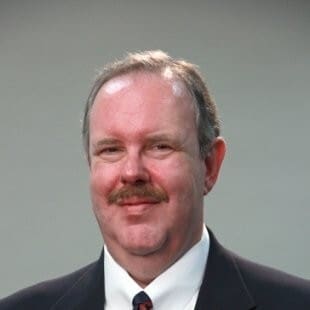
By Debbie Bolla
Editor’s note: At the 2014 COMMIT!Forum in New York, I had the rare opportunity to interview the CEO and executive vice president of human resources for leading electrical and wire provider Southwire Company. To have both Stu Thorn and Kathleen Edge on stage at the same time allowed HRO Today to capture their incredible story of how HR and the C-Suite work together to build a sustainable workforce.
Stu Thorn has been at the helm of Southwire Company, a multi-billion-dollar electrical and wire company based in Georgia, for the past 13 years. During his tenure, Thorn has been instrumental in creating a culture in which employees can thrive. “One word defines our corporation and that’s collaboration,” he says. Thorn crafted a framework based on Southwire’s five foundational pillars of success:
- Building worth -focus on profitability
- Growing green -reducing Southwire’senvironmental footprint
- Doing right -ethics and transparency
- Living well -initiatives around safety, health,and wellness
- Giving back -community service and involvement
Thorn says that through these pillars, Southwire creates an environment where employees can live well, enjoy a sense of diversity, be well-informed, and simply have fun. He understands the importance culture has on the bottom line. “To us, sustainability is how do you operate the company in a way that can sustain success to the next generation,” he explains. “What makes Southwire a special company is its people, and it’s ultimately through our people that we have a competitive advantage.”
Making people the central focus of the business and business strategy is simply music to HR’s ears. When Kathleen Edge joined Thorn’s leadership team in February 2013, she immediately saw that Southwire employees were living and breathing those five pillars. “Stu is a progressive leader who wants all employees to live to their fullest potential,” Edge says. “I planned to build on an already successful platform.”
So how do Thorn and Edge encourage employees to live to their fullest potential? By giving them outlets that allow them to: offer valuable and listened-to feedback; earn coaching and mentoring for professional development; and participate in service-driven actions that fit their preference.
Let’s look at a few examples:
Allowing employees to be a bigger part of the business. “We talk to all levels of employees as business people. Whether you are CEO or driving a forklift, your job is to help the business succeed,” says Thorn. Southwire has an initiative, Sounding Board, in which Thorn joins a group of employees for lunch or dinner once a month, in order to share thoughts, feedback, and concerns and drive change. For example, from one Sounding Board meeting, the company executed an installation of a new roof at a manufacturing facility to address concerns over safety of a team working there.
Collaboration occurs at all levels. Thorn says he has lunch every Friday with his direct team brainstorm company growth ideas and possible investments. This also happens on the micro-level with daily huddles within work groups and departments.
Providing the workforce with coaching, mentoring, and leadership training. “At Southwire, we try to develop our people from all different angles,” says Thorn. The company has an internal portal, iAM, which allows employees to seek coaching and performance feedback. This approach encourages employee growth, and lets them showcase their work history, goals, and aspirations.
“iAm is really about reaching out to someone for coaching and giving empowerment,” says Edge. “We have subject- matter experts to turn to.” Edge also says iAm helps eliminate any awkward conversations during annual reviews since the portal brings a level of transparency to ongoing employee performance.
In addition to employee mentors, Southwire believes in core performance development and leadership training. The company has an online learning system, Southwire University, which is a resource that provides employees with access to training modules. The system also tracks employee participation. Southwire Leadership Academy is an annual program for up-and-coming leaders. At the week-long retreat, 20 employees participate in team-building exercises and in discussions on company growth, among other activities. “It really pushes our culture forward,” says Thorn.
Offering employees outlets to give back in ways that fit them best. “We have such a diverse way that people can give back in the community,” explains Edge. “They can do it through their time, family, personal organization.” Once, a new CIO joined the team, and at the time, the staff didn’t know he had a son with special needs. Southwire had a program that gave the CIO an opportunity to volunteer at the Special Olympics – and he felt empowered as a result, Edge said.
Within Southwire, there is a service group called Project GIFT, also known as Blackshirts because of their signature uniform, that volunteers time and resources to a variety of community programs. What is so unique about the Blackshirts is that the service group wasn’t a bureaucratic- driven CR initiative -it started at the employee level. A handful of staff wanted to put on Christmas for an area in Mississippi that was hit particular hard by Hurricane Katrina.
“The company didn’t create it -employees self-organized it,” explains Thorn. “It was so successful they wanted to do more. I said ‘sure’, but I wasn’t going to tell them what to do. This is employees giving back on their own validation.”
The Blackshirts are now 500 members strong, and have participated in programs that deliver school supplies to kids in need and donations for Toys for Tots, and support other relief efforts during hurricanes Katrina, Rita and Sandy, as well as several major storms and power disturbances in the Midwest and Northeast.
All of Southwire’s efforts take employee engagement to the next level. The company’s collaborative approach drives its workforce to feel empowered -and an empowered workforce is one that stays. “Collaboration creates a real sense of glue between the organization,” he explains. “It creates an environment where people want to stay.”












